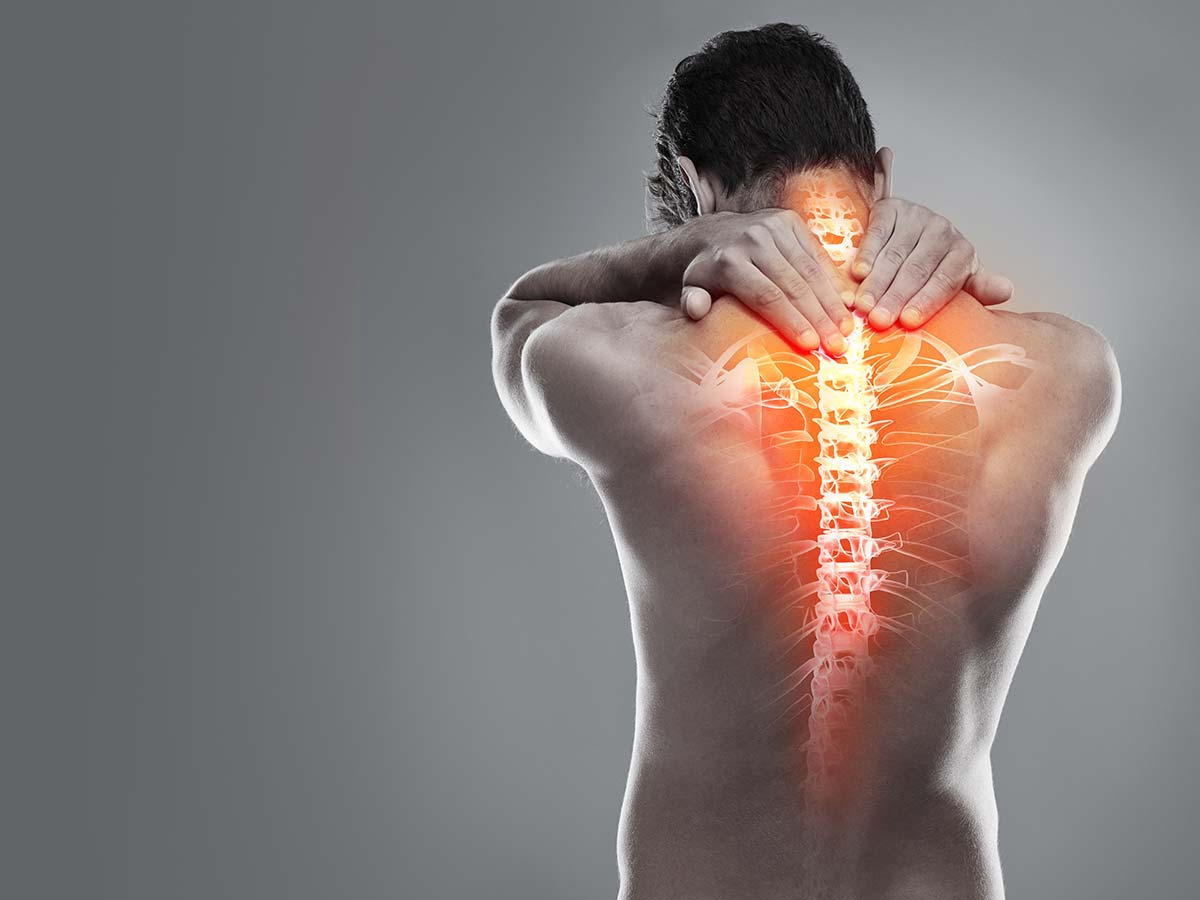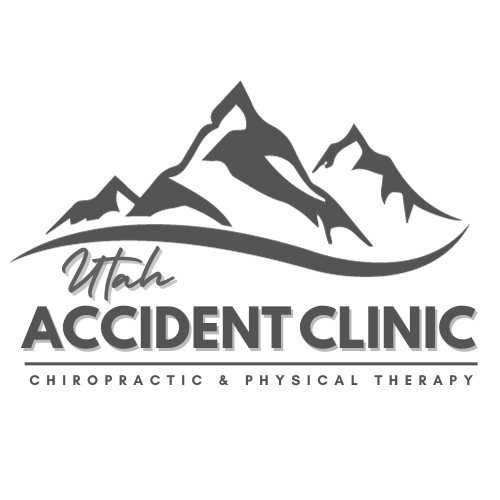Chiropractic treatment is a non-invasive approach to treating back pain that has recently gained popularity. This treatment focuses on the musculoskeletal system, particularly the spine, and involves manual manipulation of the spinal column to improve the range of motion, reduce pain, and promote healing.
Chiropractors are licensed healthcare professionals specializing in diagnosing and treating conditions related to the spine and nervous system. They use their expertise to identify misalignments or subluxations in the spine that may be causing pain or discomfort. By performing chiropractic adjustments, they can help restore proper alignment and function to the affected area.
Chiropractic treatments may also include other therapies, such as:
- massage,
- stretching, and
- exercise to support overall spinal health
These additional therapies can help patients maintain proper alignment between appointments and prevent future injuries.
While chiropractic treatment is not a one-size-fits-all solution for back pain, it can offer effective relief for many patients without surgery or medication. Chiropractors work with each patient individually to develop a personalized treatment plan that addresses their needs and concerns.
If you are experiencing back pain or discomfort, consider seeking a licensed chiropractor for an evaluation. With their expertise in spinal manipulation and other therapies, they can offer treatment options to help alleviate your symptoms and get you back to feeling your best.
Understanding the Basics of Chiropractic Treatment
Personalized Treatment Plan for Back Pain
Chiropractic treatment involves spinal manipulation or adjustment to alleviate pain and improve mobility. Unlike traditional medical treatments that focus on treating symptoms, chiropractors aim to address the root cause of the problem.
When a patient visits a chiropractor for back pain, the first step is to conduct a thorough examination to determine the underlying cause of their condition. Based on this evaluation, the chiropractor will create a personalized treatment plan that addresses each patient’s specific needs.
The Treatment Process
Chiropractic care is considered a primary approach to treating back pain, meaning patients can seek treatment without a referral from a medical doctor.
- Initial Consultation: The initial consultation with the chiropractor typically involves an assessment of the patient’s medical history and current symptoms. This information helps in determining the best course of action for treatment.
- Treatment Plan: After evaluating your condition, your chiropractor will develop an individualized treatment plan tailored to you. The primary technique used in chiropractic treatment is spinal manipulation or adjustment, which involves applying controlled force to joints that have become restricted in their movement.
- Adjustment Session: During an adjustment session, your chiropractor will use their hands or specialized tools to gently apply pressure and manipulate your spine. This process aims to restore proper alignment and function within your body’s musculoskeletal system.

Common Causes of Back Pain and How Chiropractic Treatment Can Help
Poor Posture and Spinal Misalignment
Poor posture and spinal misalignment are common causes of back pain that can be addressed through chiropractic treatment. Many people spend hours sitting at a desk or hunched over their phones, leading to poor posture that puts pressure on the spine. Over time, this can cause misalignments in the spine, leading to discomfort and pain.
Chiropractors use various techniques to realign the spine and reduce pressure on nerves. One of the most common techniques is called chiropractic adjustment. During an adjustment, the chiropractor will apply gentle force to specific spine areas to move it into proper alignment. This can help to alleviate pain and improve mobility.
Herniated Discs or Muscle Strains
Injuries such as herniated discs or muscle strains can also cause back pain. These damages often occur during physical activity or as a result of an accident. Chiropractic treatment can help to speed up the healing process by reducing inflammation and promoting blood flow to the affected area.
Arthritis and Degenerative Disc Disease
Arthritis and degenerative disc disease are other common causes of back pain, particularly in older adults. These conditions can cause inflammation and deterioration of the joints and discs in the spine, leading to chronic pain and stiffness. Chiropractic treatment can help to improve joint mobility, reduce inflammation, and alleviate pain associated with these conditions.
Stress and Tension
Stress and tension can also contribute to back pain, as they cause the muscles in the back to tighten and become stiff. Chiropractic treatment can help release muscle tension and promote relaxation, reducing pain and discomfort.
Chiropractic treatment can be a highly effective approach to addressing back pain caused by various factors.
By realigning the spine, reducing inflammation, improving joint mobility, and promoting relaxation, chiropractors can help patients experience significant relief from their symptoms and improve their overall quality of life.
Types of Therapies Offered by Chiropractors
Manual Therapy: Hands-on Treatment for Pain Relief
One of the most common types of therapies chiropractors offer is manual therapy. This therapy uses hands-on techniques to manipulate and adjust the spine and other joints. Manual therapy aims to improve mobility, reduce pain, and promote healing.
Chiropractors use a variety of manual therapy techniques, including:
- Spinal manipulation involves applying a controlled force to a joint in the spine that is not moving correctly. This can help restore normal motion and alleviate pain.
- Mobilization is a gentler form of spinal manipulation that involves stretching and moving the joint through its range of motion.
Soft Tissue Therapy: Massage Techniques for Pain Relief
Another type of therapy offered by chiropractors is soft tissue therapy. This type of therapy involves using massage techniques to release tension in muscles and other soft tissues throughout the body.
Soft tissue therapy can benefit people with chronic pain or stiffness in their muscles or joints. By releasing tension in these areas, chiropractors can help improve the range of motion, reduce pain, and promote healing.
Electrical Stimulation Therapy: Using Electricity for Pain Relief
Chiropractors may also use electrical stimulation therapy to help reduce pain and inflammation and promote healing in injured tissues. During this therapy, electrodes are placed on the skin near the affected area. These electrodes deliver tiny electrical impulses that stimulate the nerves in that area.
Electrical stimulation therapy can benefit people with chronic pain or injuries that have not responded well to other treatments. It can also help speed up recovery after surgery or injury.
Ultrasound Therapy: Sound Waves for Healing
Ultrasound therapy is another type of treatment offered by chiropractors. During this type of therapy, high-frequency sound waves penetrate deep into tissues. This can help reduce pain and inflammation, as well as promote healing.
Ultrasound therapy is often used with other treatments, such as manual or exercise therapy. It can benefit people suffering from chronic pain or injuries that have not responded well to other medicines.
Exercise Therapy: Strengthening Muscles and Preventing Future Injuries
Chiropractors may also prescribe specific exercises to help strengthen muscles, improve flexibility, and prevent future injuries. These exercises can be done at home or in the chiropractor’s office under supervision.
Exercise therapy can benefit people with chronic pain or injuries that have not responded well to other treatments. By strengthening the muscles around the affected area, chiropractors can help improve the range of motion, reduce pain, and prevent future injuries.
Risks and Benefits of Chiropractic Treatment
Benefits
Chiropractic treatment is a non-invasive and drug-free approach to treating back pain. It can relieve pain without needing medication or surgery, making it an attractive option for many patients.
Chiropractic adjustments can also improve mobility and flexibility, helping patients return to daily activities more quickly. Additionally, chiropractic treatment can promote proper nerve function and blood flow, improving overall wellness.
Risks
While chiropractic treatment is generally safe, there are some risks involved. Some patients may experience mild side effects such as soreness or stiffness after a chiropractic adjustment. These side effects typically resolve within a few days.
However, there is a small risk of more severe complications such as herniated discs or stroke, although these are extremely rare. Chiropractic treatment may not be suitable for everyone, especially those with certain medical conditions or spinal abnormalities.
Safety Precautions
To minimize the risk of complications, choosing a licensed and experienced chiropractor who has undergone proper training is essential. Patients should disclose their entire medical history and medications to their chiropractor before treatment. Chiropractors should also perform a thorough physical exam and diagnostic tests before recommending treatment.
Effectiveness
Studies have shown that chiropractic treatment can effectively reduce back pain and improve function. However, results may vary depending on the individual case and the severity of the condition. Chiropractic treatment may also be more effective when combined with other therapies, such as exercise or massage.
Alternative Treatments
Patients should consider other non-invasive treatments like physical therapy or acupuncture before trying chiropractic treatment. Medication or surgery may sometimes be necessary to treat severe back pain. It’s important to discuss all options with a healthcare professional before deciding.
Long-term Benefits
One of the key benefits of chiropractic treatment is that it can provide long-term benefits by addressing the underlying cause of back pain rather than just masking symptoms. Regular chiropractic care can also help prevent future injuries and maintain overall spinal health.
Patients should discuss a long-term treatment plan with their chiropractor to ensure they receive the maximum benefit from chiropractic care. This may include regular adjustments, exercises, and lifestyle changes.
It’s important to note that while chiropractic treatment can be effective for many patients, it is not a cure-all for back pain. Patients should work with their healthcare provider to develop a comprehensive treatment plan that addresses all aspects of their condition.

When to Seek Professional Help for Back Pain
Severe Pain in Lower Back
Lower back pain is a common condition that affects millions of people worldwide. While some cases of lower back pain can be managed with home remedies and over-the-counter medications, others require professional help. If you experience severe pain in your lower back lasting more than a few days, it’s time to seek professional help.
Chronic Back Pain
Chronic back pain is defined as pain that persists for more than 12 weeks. Chronic back pain can be caused by poor posture, muscle strain, or an underlying medical condition. If you have chronic back pain, you must get evaluated by a spine specialist. A spine specialist can diagnose the cause of your chronic pain and provide targeted treatment options.
Low Back Pain
Low back pain that radiates down your legs or causes numbness or weakness in your legs may indicate a herniated disc and requires immediate medical attention. A herniated disc occurs when the soft tissue inside the spinal column pushes through the outer layer of cartilage and presses against the nerves in the spinal cord.
The Underlying Medical Condition
Back pain caused by an underlying medical condition, such as arthritis or osteoporosis, requires specialized treatment from a specialist. Arthritis is an inflammatory condition that affects the joints, including those in the spine. Osteoporosis is when bones become weak and brittle and prone to fractures.
When Home Remedies Don’t Work
If you’ve tried home remedies and over-the-counter medications without success, it’s time to see a specialist who can diagnose the cause of your chronic pain and provide targeted treatment options. Home remedies such as ice or heat therapy, massage, or stretching exercises can help alleviate mild back pain. However, if your pain persists despite these remedies, it’s time to seek professional help.
Empathetic Tone: Understanding Your Pain
Lower back pain can sometimes be debilitating and affect your daily life. We understand how frustrating it can be to deal with chronic pain that doesn’t seem to go away. Our specialists help you get back on track and live a pain-free life.
Statistics Show the Importance of Seeking Professional Help
According to the American Chiropractic Association, lower back pain is one of the most common reasons for missed workdays and disability worldwide. It is estimated that up to 80% of people will experience lower back pain at some point. Seeking professional help early on can prevent further damage and improve your chances of recovery.
Is Self-Chiropractic Safe for Your Back?
Self-Chiropractic: Is It Safe for Your Back?
As a chiropractor with years of experience treating back pain, I have seen many individuals attempt to adjust their spines without proper training and knowledge. While some may believe self-chiropractic is a quick and easy solution to alleviate pain, it can be dangerous.
Self-chiropractic Can Be Dangerous
Adjusting your spine without proper training and knowledge can lead to severe injuries such as herniated discs, muscle strains, and nerve damage. These injuries can result in long-term pain, discomfort, and decreased mobility.
One common mistake when attempting self-chiropractic is applying too much force or pressure to the spine. This can cause misalignments or further damage to the spine, exacerbating existing conditions or creating new ones altogether.
Lack of Precision
Chiropractors undergo extensive training to apply special force to specific spine areas. Without this training, attempting self-chiropractic can result in misalignments or further damage to the spine.
Additionally, chiropractors use specialized tools and techniques unavailable for home use. Attempting self-chiropractic without these tools and methods can lead to ineffective treatment or injury.
Underlying Conditions
Self-chiropractic may not be appropriate for individuals with underlying medical conditions such as osteoporosis, arthritis, or spinal cord injuries. These conditions require specialized care and treatment from a trained professional.
For example, individuals with osteoporosis have weakened bones that are more susceptible to fractures. Attempting self-chiropractic on weakened bones could result in serious injury.
Better Alternatives
Instead of attempting self-chiropractic, seeking a licensed chiropractor who can provide safe and effective treatment for back pain is recommended. Chiropractors are trained professionals who understand the complexities of spinal health and are equipped with the tools and techniques necessary to provide effective treatment.
Additionally, incorporating exercises and stretches into your daily routine can help improve spinal health and reduce the risk of injury. Exercises such as yoga or Pilates can help strengthen core muscles, which support the spine and improve overall posture.
According to a study published in the Journal of Manipulative and Physiological Therapeutics, patients who received chiropractic care for low back pain have reported more significant pain and function improvement than those who received standard medical care.
Promoting a Healthy Back through Lifestyle Factors
Maintain Good Posture
Maintaining good posture is crucial to promoting a healthy back. Poor posture can strain your lower back muscles and ligaments, leading to pain and discomfort. Sit straight with your shoulders back and your feet flat on the ground when sitting or standing. Avoid slouching or hunching over, as this can put extra stress on your spine.
Exercise Regularly
Regular exercise is essential for keeping your back healthy and strong. Focus on exercises that strengthen the muscles around your spine, such as planks, bridges, and bird dogs. These exercises help to improve core strength and stability while reducing the risk of injury.
Stretch Often
Stretching can help improve flexibility and reduce tension in your muscles and joints. Incorporating stretches like hamstring stretches, hip flexor stretches, and spinal twists into your daily routine can help keep your back limber and pain-free.
Stay Hydrated
Drinking plenty of water is crucial for maintaining a healthy back. Water helps to keep your discs hydrated and healthy, reducing the risk of disc degeneration. Aim for at least eight glasses of water daily to ensure proper hydration.
Develop a Healthy Eating Plan
Eating a balanced diet that includes plenty of fruits, vegetables, lean proteins, and whole grains can help keep your body healthy while reducing inflammation in your joints. Inflammation is a significant contributor to chronic pain conditions like arthritis.
Maintain Proper Alignment
Poor alignment puts extra stress on your back muscles and joints. Wear supportive shoes that provide adequate arch support when walking or standing for long periods. Use an ergonomic desk or computer station furniture to maintain proper seated alignment.
A Word of Caution About Symptoms
Patients should always pay close attention to their symptoms and report them accurately to their chiropractors. This is because the symptoms can help diagnose and treat their condition. Whether it’s a dull ache or sharp pain, patients should describe their symptoms in detail so that the chiropractor can better understand what’s going on.
It is also essential for patients to disclose their medical history and any pre-existing conditions to their chiropractor. Specific treatments may have side effects or be contraindicated for certain conditions. For example, if a patient has osteoporosis, the chiropractor may need to modify the treatment plan to avoid causing further injury.
Chiropractic care is generally safe and effective, but patients may experience mild side effects, such as soreness or stiffness after treatment.
These side effects are usually temporary and go away within a few days. However, if a patient experiences numbness, tingling, or other unusual sensations after treatment, they should inform their chiropractor immediately.
During the first visit, the chiropractor will thoroughly evaluate the patient’s condition.
This may include physical tests and questions about the patient’s symptoms. Patients should feel comfortable asking questions and raising concerns about their condition or the treatment plan.
One common issue that patients experience during chiropractic treatment is popping sounds in their joints. This sound is typical and is caused by the release of pressure in the joints during spinal manipulation. While it may initially sound alarming, it’s nothing to worry about.
Patients receiving usual care from a chiropractor should be aware of potential risks associated with this type of treatment, just like any other medical procedure.
For example, some people might experience increased pain following an adjustment, while others might develop headaches or dizziness after receiving spinal manipulation therapy.
However, these risks are relatively rare compared with other medical intervention forms such as surgery or prescription drugs. Chiropractic care is a safe and effective alternative to traditional medical treatments for musculoskeletal problems.
Patients experiencing symptoms related to an injury or other medical condition should not hesitate to seek medical attention from a qualified healthcare provider. While chiropractic care can help manage pain and improve mobility, it is not a substitute for proper medical treatment.
Recent Study on Chiropractic Care for Low Back Pain
Chronic low back pain is a common condition affecting millions of people worldwide. It can be caused by various factors such as arthritis, muscle strain, or injury. Recent studies indicate that chiropractic care can effectively treat chronic low back pain.
Astudy published in the Journal of Manipulative and Physiological Therapeutics explored the effects of chiropractic care on chronic low back pain.
The study involved 192 randomly assigned participants to receive either chiropractic or standard medical care over six months. The findings revealed that those who received chiropractic care reported more significant reductions in pain intensity and disability than those who received traditional medical care.
Implications and Considerations
These studies suggest that chiropractic care may be a viable treatment option for chronic low back pain, particularly for individuals with arthritis-related conditions.
Chiropractors utilize targeted adjustments to the lower back area to alleviate pain and improve mobility.
Finding a Qualified Healthcare Provider
If you are suffering from chronic low back pain, seeking a qualified healthcare provider for relief is crucial.
Consider consulting a chiropractor in Littleton, CO, who can provide targeted adjustments to the lower back area, helping alleviate symptoms and improve the overall quality of life.
Complementary Therapies
Chiropractors offer hands-on treatments like spinal manipulation and mobilization techniques and may also provide lifestyle counseling and complementary therapies.
These additional approaches can include exercises, stretches, nutritional counseling, and stress management techniques to help patients manage pain and improve overall health.
Individualized Treatment
It is important to note that chiropractic care is not a one-size-fits-all solution for chronic low back pain. Your chiropractor will work with you to develop an individualized treatment plan based on your specific needs and goals. They may also refer you to other healthcare providers to ensure the best care.
Final Thoughts on Chiropractic Treatment for Back Pain
Back pain can be a debilitating condition that affects millions of people worldwide. It can impact your daily activities, work, and overall quality of life. While many treatment options are available, chiropractic treatment has emerged as a popular alternative to traditional medicine.
As discussed in this post, chiropractic treatment involves the manipulation of the spine and other joints to alleviate back pain. This approach is based on the belief that misalignments in the spine can cause various health problems.
Chiropractors use techniques such as spinal adjustments, massage therapy, and exercise programs to help patients recover from back pain. They also educate their patients on lifestyle factors that contribute to back pain and how they can promote a healthy back.
One of the significant benefits of chiropractic treatment is its non-invasive nature. Unlike surgery or medication, chiropractic care involves no invasive procedures or drugs with potential side effects. It’s a natural way to promote healing without relying on external agents.
However, like any medical intervention, there are risks associated with chiropractic treatment. These risks include soreness after treatment, fatigue, and headaches. In rare cases, more severe complications may arise. It’s essential to seek professional help when experiencing back pain before attempting self-chiropractic at home. Self-chiropractic may lead to further complications if done incorrectly.
In conclusion, chiropractic treatment offers an effective alternative for those seeking relief from back pain without resorting to surgery or medication. Proper education and guidance from a licensed practitioner can provide long-term benefits for promoting a healthy back and overall wellness.
If you’re considering chiropractic care for your back pain or other conditions related to the musculoskeletal system, consult Utah Accident Clinic before making any decisions about your care plan.












